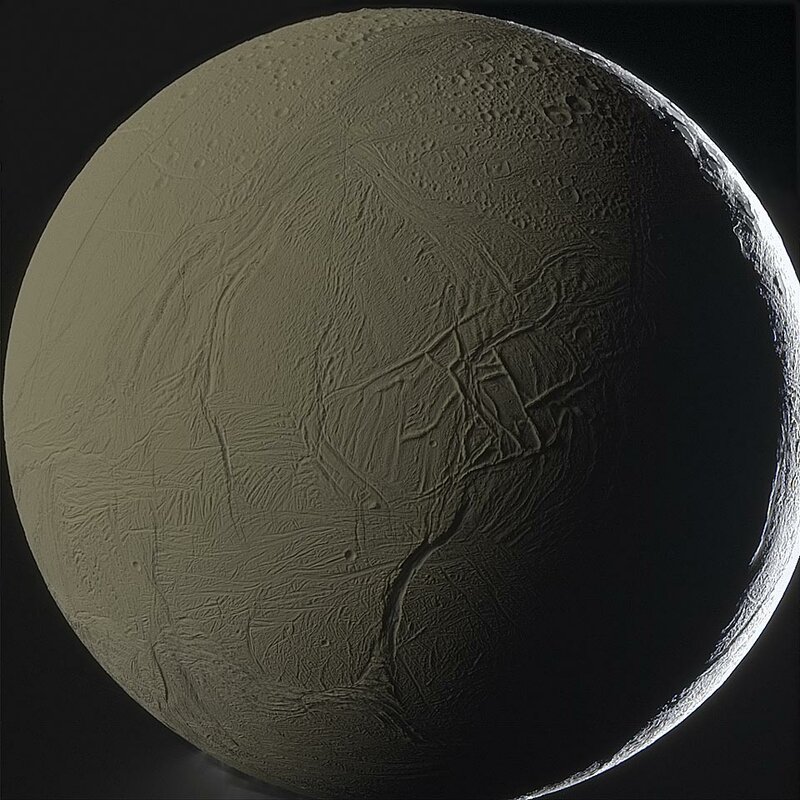Posted on Feb 5, 2023
APOD: 2023 February 5 – Enceladus by Saturnshine
1.25K
28
5
13
13
0
Posted 3 y ago
Responses: 3
Maj William W. 'Bill' Price good afternoon my friend, and good to see you on the RP net this Sunday afternoon February 5, 2023 . I have said it many times before, yet I will say it again, "nobody does it better from above". Thank you for sharing Astronomy Picture of the Day (APOD):"Enceladus by Saturnshine."
PO1 William "Chip" Nagel SSG Michael Noll Lt Col John (Jack) Christensen Cpl Vic Burk SGT Charlie Lee] Sgt (Join to see) SFC David Reid, M.S, PHR, SHRM-CP, DTM PV2 Larry Sellnow SPC Gary C. SPC (Join to see) Amn Dale Preisach SGT Ruben Lozada 1SG Paul Ayotte CPT Richard Trione SFC Ralph E Kelley 1SG Patrick Burke PV2 Scott Mollette SGT Gerald “Jerry” Harrell Lt Col Charlie Brown
PO1 William "Chip" Nagel SSG Michael Noll Lt Col John (Jack) Christensen Cpl Vic Burk SGT Charlie Lee] Sgt (Join to see) SFC David Reid, M.S, PHR, SHRM-CP, DTM PV2 Larry Sellnow SPC Gary C. SPC (Join to see) Amn Dale Preisach SGT Ruben Lozada 1SG Paul Ayotte CPT Richard Trione SFC Ralph E Kelley 1SG Patrick Burke PV2 Scott Mollette SGT Gerald “Jerry” Harrell Lt Col Charlie Brown
(8)
(0)
Thank you my space-exploration advocate friend and brother-in-Christ Maj William W. 'Bill' Price for posting the Saturday, February 5, 2023 Astronomy Picture of the Day (APOD): Enceladus by Saturnshine
Image: Enceladus by Saturnshine; Image Credit: NASA; ESA, JPL, Cassini Imaging Team, SSI; Color Composite: Gordan Ugarkovic
APOD Explanation: This moon is shining by the light of its planet. Specifically, a large portion of Enceladus pictured here is illuminated primarily by sunlight first reflected from the planet Saturn. The result is that the normally snow-white moon appears in the gold color of Saturn's cloud tops. As most of the illumination comes from the image left, a labyrinth of ridges throws notable shadows just to the right of the image center, while the kilometer-deep canyon Labtayt Sulci is visible just below. The bright thin crescent on the far right is the only part of Enceladus directly lit by the Sun. The featured image was taken in 2011 by the robotic Cassini spacecraft during a close pass by the enigmatic moon. Inspection of the lower left part of this digitally sharpened image reveals plumes of ice crystals thought to originate in a below-surface sea.
Image: Enceladus by Saturnshine; Image Credit: NASA; ESA, JPL, Cassini Imaging Team, SSI; Color Composite: Gordan Ugarkovic
APOD Explanation: This moon is shining by the light of its planet. Specifically, a large portion of Enceladus pictured here is illuminated primarily by sunlight first reflected from the planet Saturn. The result is that the normally snow-white moon appears in the gold color of Saturn's cloud tops. As most of the illumination comes from the image left, a labyrinth of ridges throws notable shadows just to the right of the image center, while the kilometer-deep canyon Labtayt Sulci is visible just below. The bright thin crescent on the far right is the only part of Enceladus directly lit by the Sun. The featured image was taken in 2011 by the robotic Cassini spacecraft during a close pass by the enigmatic moon. Inspection of the lower left part of this digitally sharpened image reveals plumes of ice crystals thought to originate in a below-surface sea.
(0)
(0)
Read This Next



 NASA
NASA Space
Space Science
Science Photography
Photography Astronomy
Astronomy




